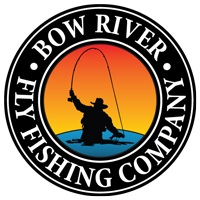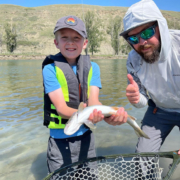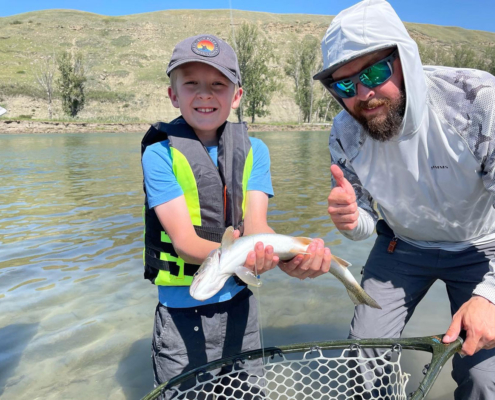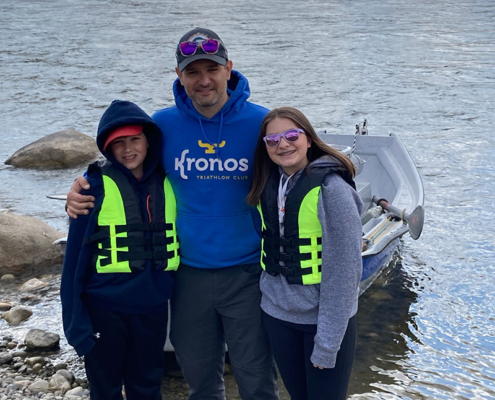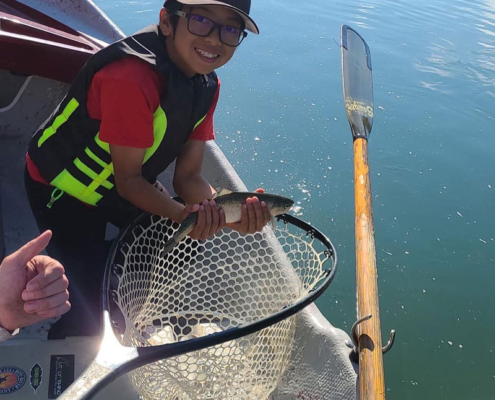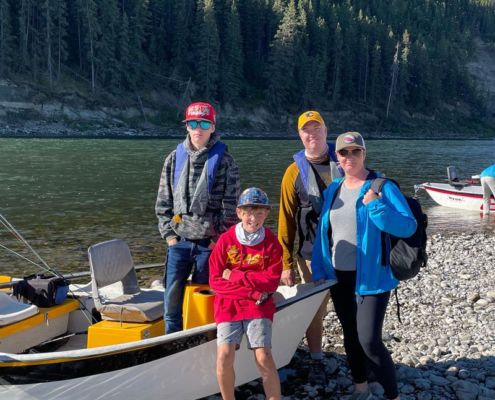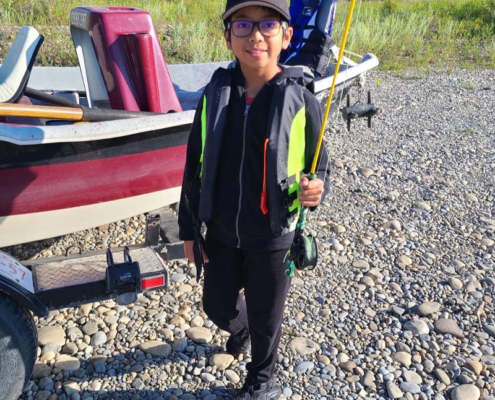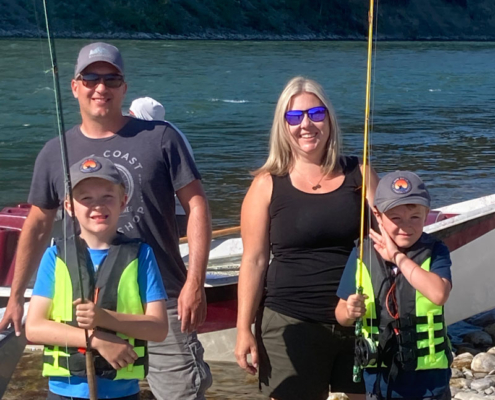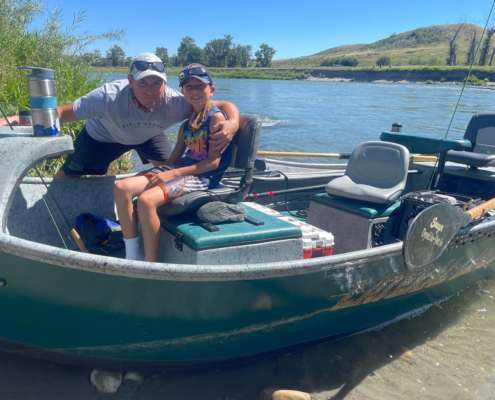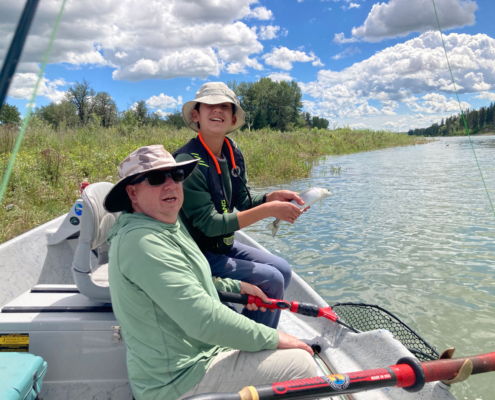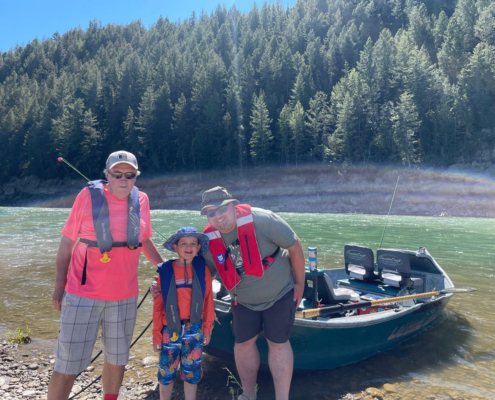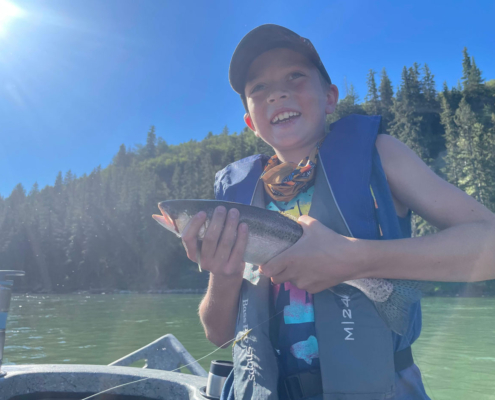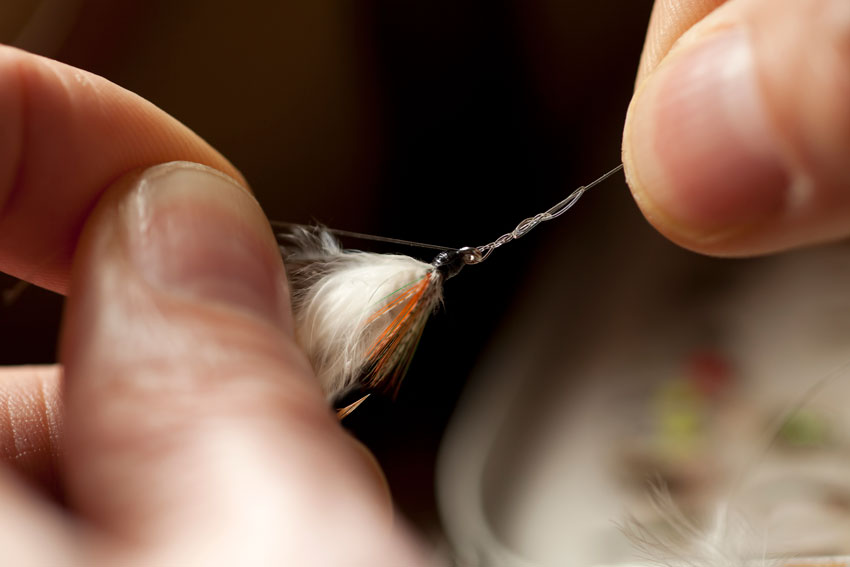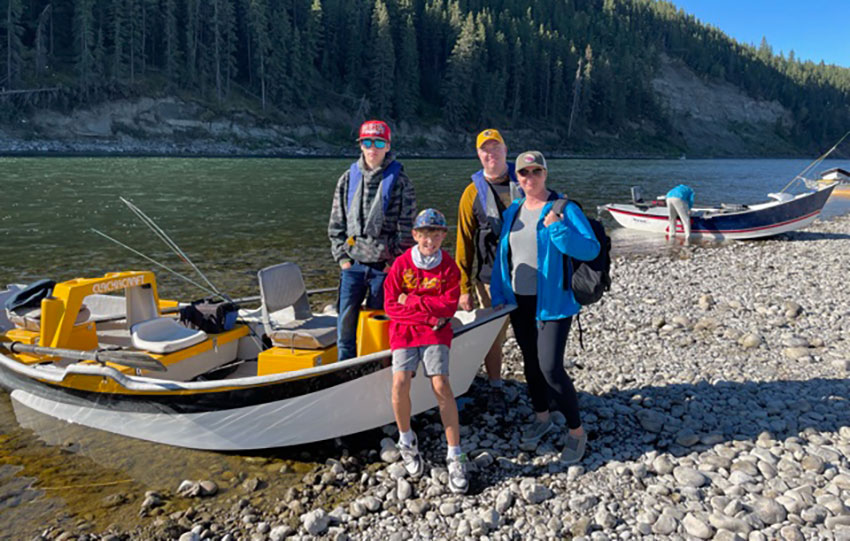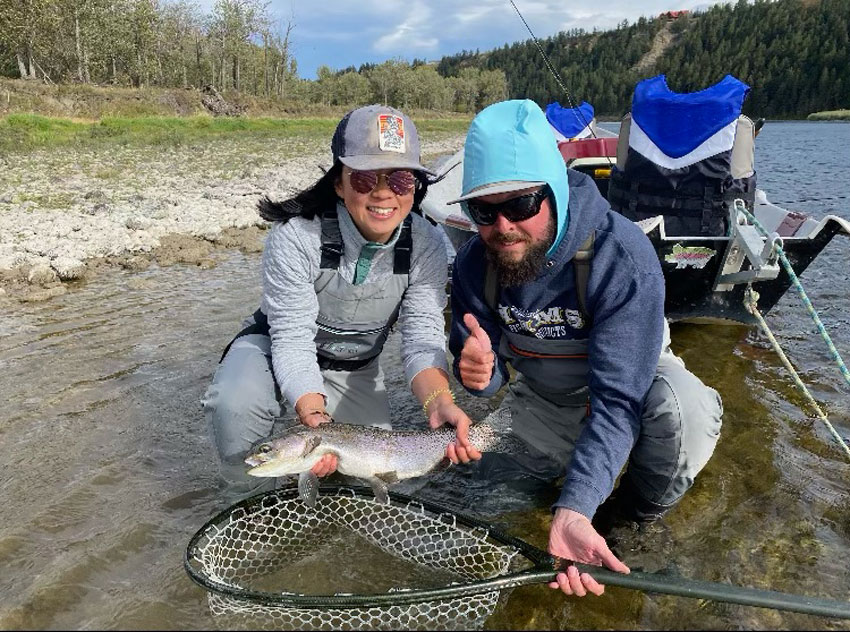Fly Fishing Lessons and Adventures for Kids
By Scott Smith, Lead Fly Fishing Guide
I’ve spent most of my adult life as a river guide, and I’ve seen all kinds of people come through the doors. Every now and then, though, there’s someone who catches me off guard with their enthusiasm for fly fishing. Usually, they’re kids. Six-year-olds with skinned knees who want to know how to tie on a dry fly because their uncle told them that he did it when he went fishing with his dad. This is great! Kids are the future of our sport, but if we want them to stick around for long enough to develop into lifelong anglers (or even just enjoy themselves for one weekend), we need to make sure that they have fun out on the water—and not just catch fish
Find a Mentor
You’ve probably heard the phrase, “knowledge is power.” With that in mind, it’s no wonder that so many people are interested in learning about fly fishing for kids. What your mentor has to say could be the difference between a good experience and an amazing one.
So how do you find someone who can teach you how to fly fish? You may be lucky enough to have a friend or relative who can help out. If not, consider joining a club or getting involved with an organization that promotes fly fishing for kids. There are many groups out there (like Trout Unlimited) that welcome new members every year and will encourage them to get involved as quickly as possible. If none of these options work for you, try asking around at local fly shops—they’ll know where all of their customers hang out, so they’ll likely have some leads!
Safety
Know the area you’re fishing in. Everyone should wear a life jacket when on board a boat, and this goes double for kids. It’s also a good idea to put the kids in a life jacket if you’re fishing in swift moving water.
Be sure to take care of yourself as well: don’t forget sunscreen!
Be sure to stay hydrated and bring plenty of water with you. Make sure that everyone in your group has a life jacket on, and make sure that the boats are properly equipped with first aid kits, flares, and other safety gear.
Fishing License
Fishing licenses are usually sold at sporting goods stores, fly shops, and the like. You can also get a fishing license online. The cost varies depending on whether or not you’re a resident of that province. Be sure to check your local regulations.
Licenses generally last for one year from the date of purchase. Kids and Seniors don’t generally need a license, but if you’re the adult fishing with them, you’re going to need one.
Equipment
There are a few points to remember when selecting equipment for your child. The most important is that they’re going to be able to use it themselves, so make sure anything you buy is age appropriate and fits into the size of their hands. You don’t want them struggling with too many tangled knots or having too much trouble handling their gear for fear of dropping it in the water and getting frustrated while trying to get the cast right.
There are some great beginner kits available online and at your local fishing shop. For smaller hands we use the Echo Gecko kit. I don’t have any affiliation with Echo, but we love these outfits for kids. The grip is narrow, the rod is shorter than adult rods, and it’s easy to get the line moving. Your local fly shop can point you in the right direction. However, kids can certainly use adult gear easy enough. Especially when you’re testing the waters. If you’re not sure what kind of gear would be best for your kid yet, just ask an employee who knows their stuff at the store; they can help find something suitable without breaking the bank.
Knots And Tangles
Whether it’s a loop knot or a clinch knot, you’ll need some knowledge of knots to keep your line in place.
If you’ve never tied a fishing knot before and want to learn how, don’t worry! Knot tying is one of the easiest skills to learn how to do on the fly; it only takes a little practice and patience. Once you get the hang of it, there are all kinds of different knots that can help make your fishing trip more enjoyable and successful. With some basic instruction and practice, even kids can learn how to tie on their own flies when out on the water with parents or friends for an afternoon adventure!
There are going to be tangles, lots of tangles. Your job is to be patient and remind the kids, this is all part of the process. Make sure you have lots of leaders, tippet and a pair of good snippers!
What to Bring
- Rod
- Leaders and Tippet
- Flies
- Waders (if you need them)
- Boots or wading shoes. They’re going to get wet.
- Bug Collector. Collect the bugs you’re imitating and make it educational.
- Rain gear
- Snacks and drinks
Fly fishing is a great family activity. It’s good for bonding, learning something new, and getting outside.
Fly fishing is a great family activity. It’s good for bonding, learning something new, and getting outside. In fact, there are many ways to enjoy fly fishing as a family:
- You can teach your kids how to hold the rod correctly and give them some basic pointers about casting and then let them experiment. There are no bad casts.
- Go where you know fish are holding. It’s great if they can see the fish. This creates a great opportunity to learn about fish behavior.
- Focus on the process and learning something new. The fish will come.
Conclusion
Fly fishing is a great family activity. It’s good for bonding, learning something new, and getting outside. I hope this article gave you some ideas on where to start! We have lesson programs and family floats that will help accelerate the learning curve. We’d love to introduce you and your crew to our sport!
